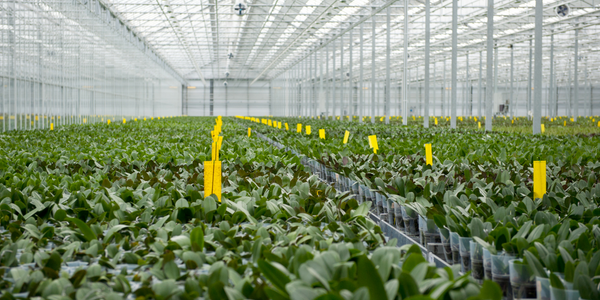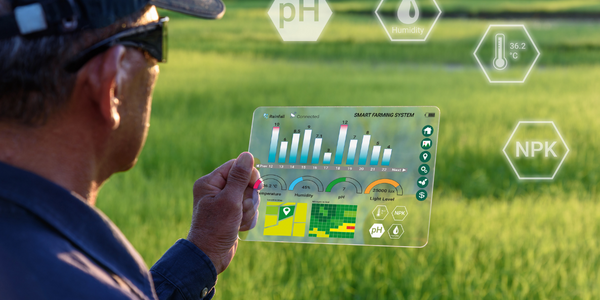Download PDF
Motech uses Control Center to automate connectivity, alerts and diagnostics for connected mobile devices
Technology Category
- Functional Applications - Remote Monitoring & Control Systems
- Analytics & Modeling - Predictive Analytics
- Networks & Connectivity - Cellular
Applicable Industries
- Agriculture
- Healthcare & Hospitals
Applicable Functions
- Field Services
- Quality Assurance
Use Cases
- Remote Patient Monitoring
- Fleet Management
- Predictive Maintenance
Services
- System Integration
- Software Design & Engineering Services
The Challenge
As populations age and the cost of healthcare rises, the use of telecare and telehealth is increasing. These forms of remote care promise to make independent living more feasible for seniors, ensuring their wellbeing, safety, and access to quality care in emergency situations. Motech Electronic Devices is expanding on this promise with the power of the Internet of Things (IoT). Previously, telecare was only delivered at home, using analog-based technologies. So, if a person fell outside of their home, the service was not available. Motech addressed that problem with CareClip, a discrete, wearable, mobile device, supported by monitoring, tracking and communication services, that gives active seniors the assurance of constant access to care and emergency services wherever they go.
About The Customer
Motech Electronic Devices is a company that leverages the power of the Internet of Things (IoT) to provide innovative solutions in the telecare and telehealth sectors. The company focuses on ensuring the wellbeing, safety, and access to quality care for seniors through remote care technologies. Motech's product line includes the CareClip, a wearable device that offers monitoring, tracking, and communication services for active seniors. Additionally, Motech has expanded its innovations to the agribusiness sector with the Moocall service, which uses IoT-enabled mobile birth monitoring sensors to assist farmers in managing cattle birthing activities. The company prides itself on being service-oriented and outcome-based, continuously evolving its service line and go-to-market strategy within the rapidly changing IoT landscape.
The Solution
Motech uses the Control Center to provide reliable uptime and 24/7 device monitoring for its CareClip product. The Control Center offers APIs that ensure 100 percent accuracy of information on the monitoring center’s dashboard, which is critical for mobile telecare services. Motech has been using Cisco Jasper Control Center from day one, ensuring that they do not compromise on service quality. The Moocall solution, another innovation by Motech, is based on a series of sensors that deliver data to the back-end platform. This data sits on Control Center, and managed connectivity is used to send messages through a message broker to a farmer’s smartphone. Motech provides the device itself, as well as a monthly subscription-based service, ensuring that farmers do not have to worry about anything as it is all taken care of by Moocall.
Operational Impact
Quantitative Benefit
Related Case Studies.

Case Study
Intelligent Farming with ThingWorx Analytics
Z Farms was facing three challenges: costly irrigation systems with water as a limited resource, narrow optimal ranges of soil moisture for growth with difficult maintenance and farm operators could not simply turn on irrigation systems like a faucet.

Case Study
Hospital Inventory Management
The hospital supply chain team is responsible for ensuring that the right medical supplies are readily available to clinicians when and where needed, and to do so in the most efficient manner possible. However, many of the systems and processes in use at the cancer center for supply chain management were not best suited to support these goals. Barcoding technology, a commonly used method for inventory management of medical supplies, is labor intensive, time consuming, does not provide real-time visibility into inventory levels and can be prone to error. Consequently, the lack of accurate and real-time visibility into inventory levels across multiple supply rooms in multiple hospital facilities creates additional inefficiency in the system causing over-ordering, hoarding, and wasted supplies. Other sources of waste and cost were also identified as candidates for improvement. Existing systems and processes did not provide adequate security for high-cost inventory within the hospital, which was another driver of cost. A lack of visibility into expiration dates for supplies resulted in supplies being wasted due to past expiry dates. Storage of supplies was also a key consideration given the location of the cancer center’s facilities in a dense urban setting, where space is always at a premium. In order to address the challenges outlined above, the hospital sought a solution that would provide real-time inventory information with high levels of accuracy, reduce the level of manual effort required and enable data driven decision making to ensure that the right supplies were readily available to clinicians in the right location at the right time.

Case Study
Greenhouse Intelligent Monitoring and Control Solution
Farming Orchids is the most successful form of precision farming in Taiwan, and also the most exported flower. Orchids need a specific temperature and humidity conditions to grow and bloom, and its flowering time may not be in line with market demands, so the price collapses when there is overproduction. Therefore, some farmers began to import automated greenhouse control systems for breeding and forcing, which not only improves quality, but also effectively controls the production period and yield to ensure revenue. In 2012, an orchid farmer built a Forcing Greenhouse of about 200 pings (approximately 661 Square Meters) in Tainan, Taiwan. The system integrator adopted Advantech’s APAX-5000 series programmable automation controllers to build the control platform, coupled with Advantech WebAccess HMI/SCADA software, to achieve cloud monitoring. The staff of the orchid field can monitor important data anytime via smart phone, iPad, and other handheld devices, and control the growth and flowering conditions. System requirements: In the past, most environmental control systems of orchid greenhouses in Taiwan used PLCs (Programmable Logic Controller) with poorscalability and control, and could not be connected to the Internet formonitoring from the cloud. For advanced database analysis and networking capability, the PC platform must be adopted. Therefore, PAC Systems (Programmable Automation Controller) with both PLC programming capabilities andPC functions is a better choice.The environmental control of the Orchid greenhouse switches on and off devices like fan, shade net, cooling/heat pump, liquid flow control, water-cooling wall etc. It is controlled by a control panel of electric controllers, and is driven by a motor, to adjust the greenhouse temperature, humidity, and other environmental conditions to the set parameters.

Case Study
Enabling Internet of Things Innovation in Agriculture
DigiBale, wanted to apply technology know-how and IP from implementations successfully to more agriculture sectors including cotton, forestry, sugarcane and cattle. However, farmers and growers still have worries about the connected technology.






